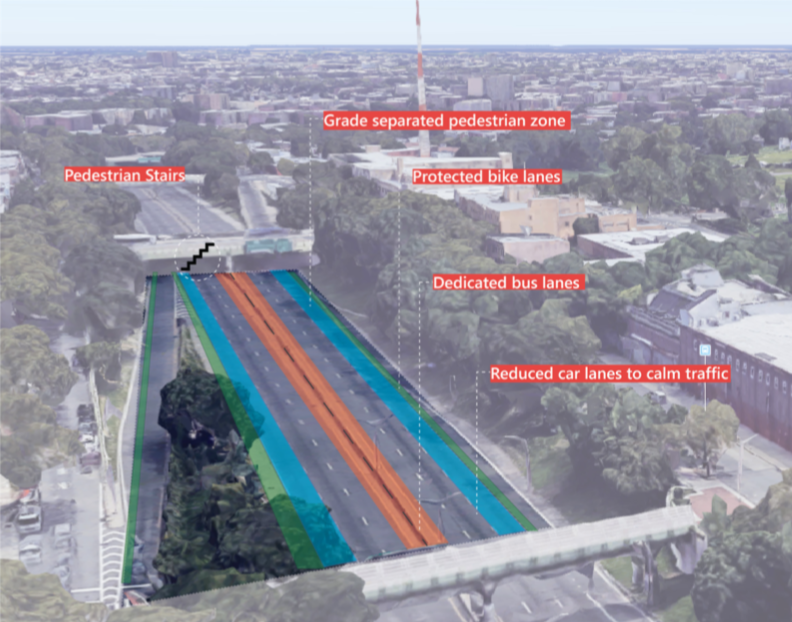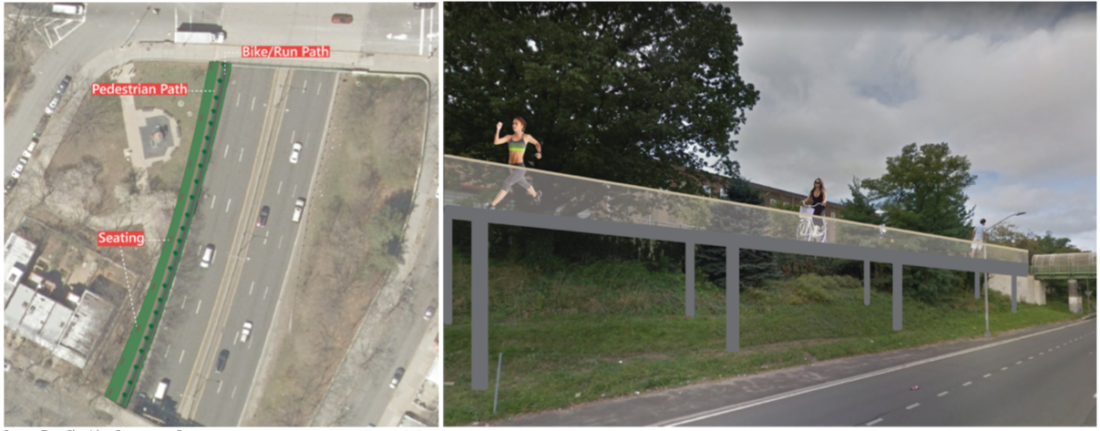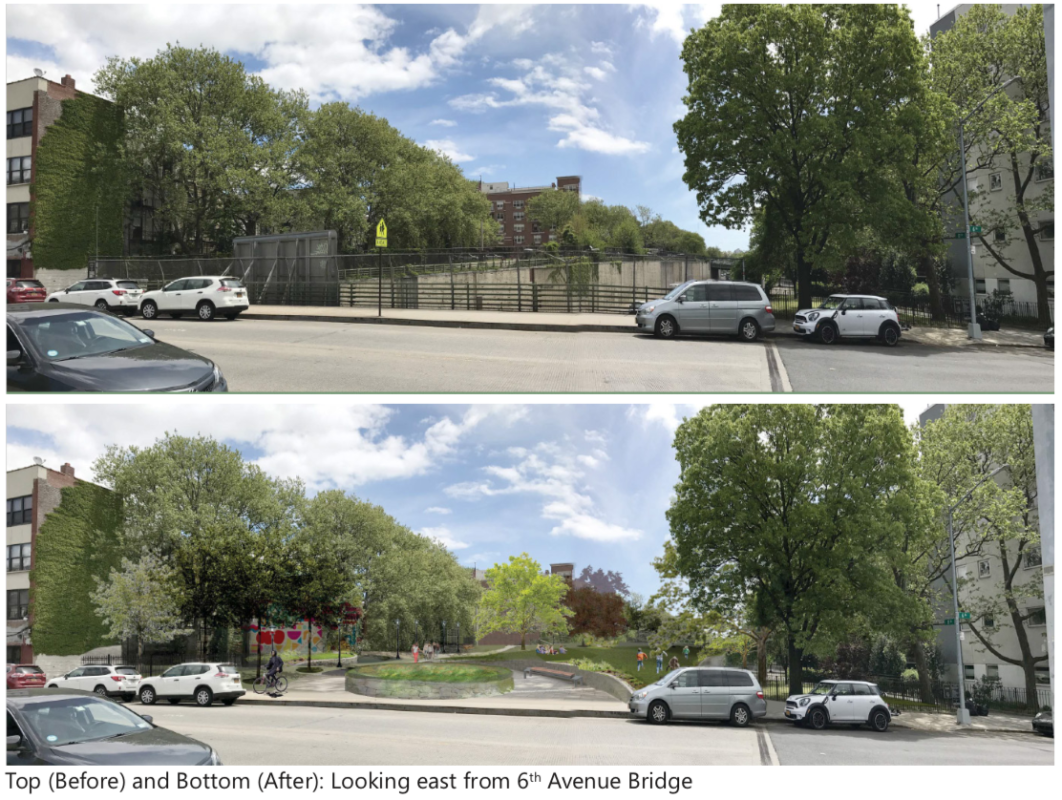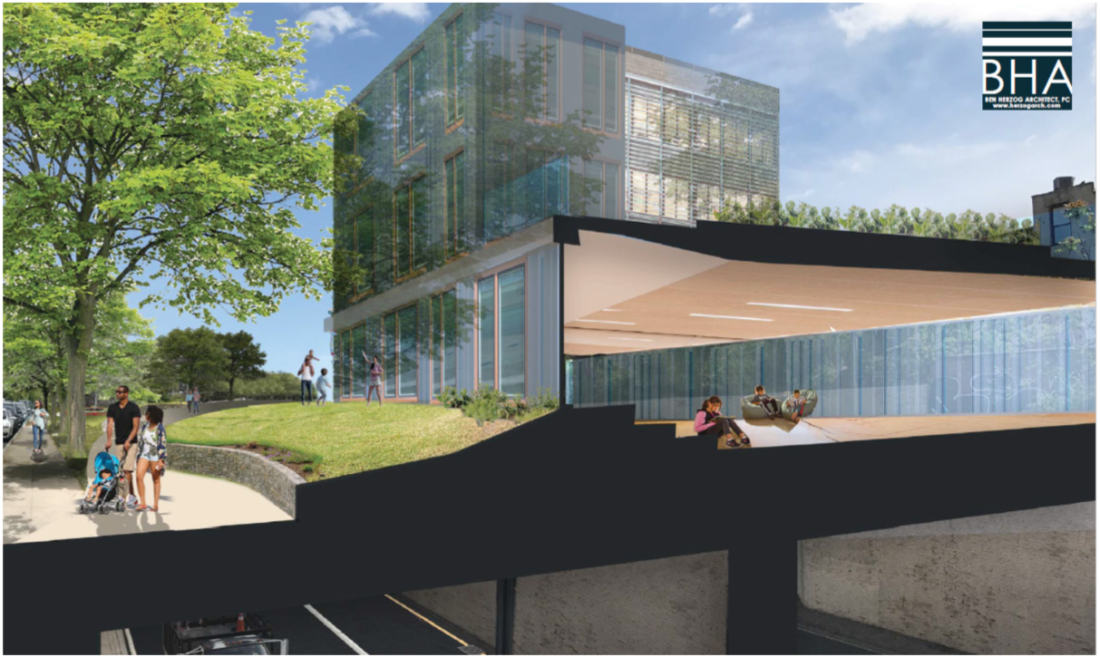Prospect Expressway Study Envisions New Redevelopment Possibilities


The Prospect Expressway cuts through South Slope, Windsor Terrace, and Greenwood Heights, into Kensington, carving up the communities and impeding connectivity, a reminder of the ambitious and often destructive projects of Robert Moses-era city planning.
Now, with a study commissioned by the Borough President and completed over the course of a year by students at the NYU Wagner School of Public Service, proposes ways to stitch the communities back together.
Borough President Adams announced the study yesterday, as well as a letter he sent to the State Department of Transportation, urging them to consider some of the recommendations detailed in the “PX Forward” report.
“Every big idea starts from a kernel of truth and that is why we’re calling on the New York State Department of Transportation to build off of this plan by commissioning a design competition to truly reimagine the corridor,” said Adams. “These are initial ideas generated from extensive community outreach but must be continued to be studied, refined, and further explored. Our students have set the foundation for this conversation and we need our State and City agencies to build on it.”
The recommendations come from studying traffic and pedestrian use of the area, looking at similar projects and engaging in community visioning sessions to understand the needs of local residents.
“The purpose and spirit of PX Forward was to take a careful look at a Robert Moses-era highway that had not been reexamined in recent years, and to imagine a future in which the infrastructure in place could better serve community needs,” said the members of the NYU Wagner Capstone team. “We are thrilled to be a part of the report’s public release, and we look forward to future conversations and efforts to bring the report’s recommendations to fruition.”
The main takeaways? Developing a cyclist and pedestrian path along the expressway, improving and expanding pedestrian decks across the expressway and building up the small parks found in the area, expanding the green space.
The original project led to the demolition of more than 400 structures and displaced around 1,200 families. Now, better utilization of space could serve to improve the lives of those who live in surrounding neighborhoods.
“Boulevarding” the expressway could lead to expanded use, creating pedestrian and bike lanes, as well as dedicating bus lanes and calming traffic with reduced car lanes. The plan would clearly require major construction work, as well as access from the grade level down to the expressway trench for pedestrians and cyclists.

For the pedestrian sections, one suggestion was an elevated walkway, almost like a mini-High Line, which would allow for walking or jogging along the sides of the expressway trench. The rendering below shows a possible solution, though the perspective faces away from the road—it’s important to remember that thousands of motorists could still be streaming by just out of the frame:

One of the more ambitious ideas for creating greenspace and reducing the impact of the expressway would be “decking” the road by covering major sections and reclaiming land above the road. In the example below, covering over the roadway east of the 6th Avenue bridge would allow for the connection and expansion of the small parks that sit on either side of the expressway:

Undoubtedly a massive infrastructure project, “decking” sections of the expressway would lead to the highest possible reclamation and utilization of land. Of course, idyllic renderings of green space are one thing, but reality might be rooted in something a bit more lucrative: development.

Covering over sections of the expressway would create a lot of space for developers to push projects, especially when every inch of Brooklyn is suddenly at a premium. Recently, developers revealed plans to build an incredibly ambitious series of developments over the exposed N train tracks in Sunset Park.
Other, smaller suggestions from the study include engaging with local artists to beautify “dead” spaces along the expressway and making tweaks to traffic flow to improve the experience of drivers, cyclists and pedestrians.
Of course, the study is just that—a preliminary look at things. In Adams’ letter, he urges the New York State Department of Transportation to issue a design challenge regarding the expressway in order to generate further ideas about how to improve lives in the neighborhoods. Naturally, all ideas going forward must be generated in close cooperation with the actual residents who call the area home.
Click here to take a look at the full “PX Forward” study on the Prospect Expressway




